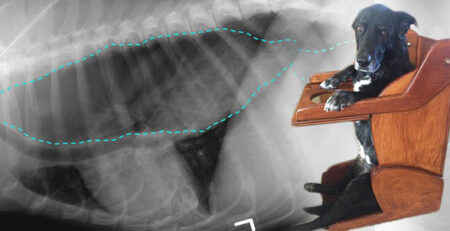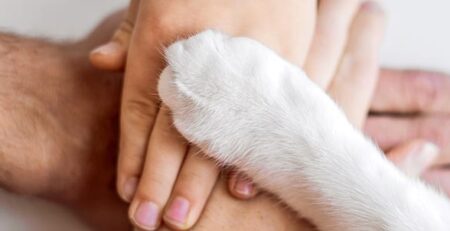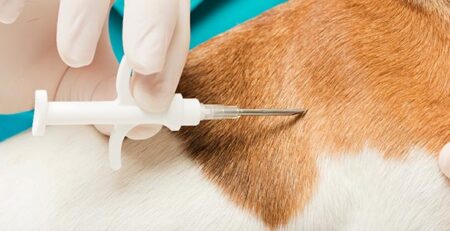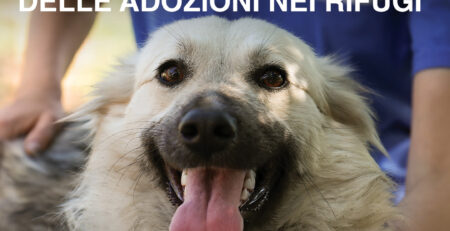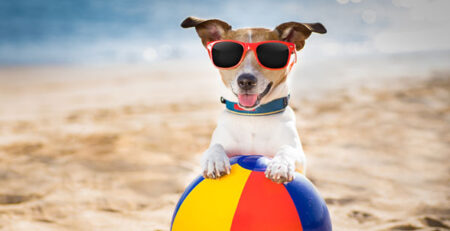Table of Contents
At the beach with your dog: here are all the tips and precautions to make this a safe and fulfilling experience for your four-legged friend
Increasing requests from vacationers to be able to take their dogs with them, especially to the beach, is enticing beach establishment managers to equip specially designated areas for four-legged animals.
So-called Dog Beaches are circumscribed beach sectors equipped with umbrellas, stalls, showers and security fencing where dogs can frolic on the beach and dive into the water.
The requirements that a dog must have to be allowed on the beach
Dogs are allowed on the beach if they are properly vaccinated so it is essential that your dog is up to date with vaccination prophylaxis.
Before planning trips to the beach with your dog, make sure of its health status through a checkup with your trusted veterinarian.
The health booklet must be shown at the door: DON’T FORGET IT AT HOME!
And don’t forget your harness , leash and muzzle either: otherwise you may be denied access to the beach.
Dog at the beach for the first time: give him time to settle in
The beach is a different place from its everyday environment, so it is normal for a dog to feel a bit lost: don’t rush it and give it plenty of time to settle in.
Take his favorite toys with you: they will serve to reassure him.
The dog and entering the water
If the dog hesitates, do not force him into the water: the approach should be gradual and spontaneous, and insisting could only create trauma.
If instead, he decides to dive, enter the water (initially very shallow) with him and never leave him alone.
The use of a life jacket is strongly recommended.
Less experienced dogs will not take risks during water raids, and for veteran swimmers, however, it will be a valuable ally that will help them with buoyancy and make them less tired.
If the currents are strong, they may drag your dog away. Never risk it: rather, no bath.
If you decide to indulge in a nap, hook your dog up to a leash to keep him under control and prevent him from wandering off.
Dog should not drink salt water from the sea
Ingestion of salt water causes vomiting and diarrhea.
As soon as you arrive at the beach, have the dog drink fresh water immediately in order to prevent it from drinking seawater instead to quench its thirst.
If, despite precautions, you have any doubt that the dog swallowed sea water while swimming, have him drink plenty of fresh water so as to decrease the salt concentration in the body.
Remember also that the dog, after eating, needs to digest.
As with humans, dogs can also risk congestion if they bathe immediately after eating, especially if the water temperature is low.
The sunscreen for the dog
First, an important caveat concerns the time: the best times are early morning and late afternoon.
Avoid the middle hours, i.e., the hottest hours, if you don’t want to run the risk of your dog suffering from heat stroke or sunburn.
Short or shorthaired dogs with light coats and pink skin are more prone to sunburn.
Use sunscreen on the hairless areas: nose, mouth, abdomen, tip of ears and base of tail.
In the absence of a specific cream, your veterinarian will be able to point you to an alternative product: usually a cream for very sensitive skin or for children as long as it is free of zinc oxide.
The heat of the sand and burning rocks.
Dogs are very sensitive to the heat of the sand, and the rocks “scald” them to the point of burning.
Therefore, special protective ointments should be applied to the fingertips to prevent dehydration.
Always seek advice from your veterinarian.
Dogs and the pitfalls of the sea
If you are in a rocky area, always be ready to help your dog when he comes out of the water: as he resurfaces, he may slip and injure himself either because of the rocky outcrops or because of the
baleen
(also called “dog teeth”).
Balans are crustaceans with bodies protected by calcareous plates that live in colonies, attached to sea rocks.
Accidental contact with balani causes sharp cuts that are difficult to heal.
Beware of hedgehogs, too: the dog may brush against them as it swims, and their sharp spines may stick in the interdigital pads.
If unfortunately your dog should injure himself, any debris should be removed from the laceration and the affected area should be carefully disinfected.
It is recommended to bring a first aid kit in case the dog needs it. The following should never be missing: disinfectant, hydrogen peroxide, band-aid, tweezers, blunt-tipped scissors, sterile gauze, elastic bandage and saline solution.
How to remove saltiness from dog hair and skin
Salt spray, or the salt elements in seawater, can cause dermatitis and dryness of the hair.
Rinse the dog with fresh water, never ice water, to remove all salt residue.
Also, use a soothing and moisturizing shampoo periodically.
On the other hand, to prevent your dog from getting sand, when he gets out of the water immediately wrap him in the towel and don’t allow him to roll around everywhere: if sand gets into his ears, nose or eyes, it can cause him serious damage.
After drying it thoroughly, spread out the towel making sure that it lies on it.
Use moistened wipes to remove grains of sand from the snout.
By dint of rubbing to remove them, the dog may scratch itself.
If you have any questions or concerns, remember that the staff doctors at La Veterinaria Clinic are all always available, even in August.
La Veterinaria Clinic is always open h24, every day including holidays and with First Aid service from 8 pm to 8 am.
For the joy of seeing them HAPPY





